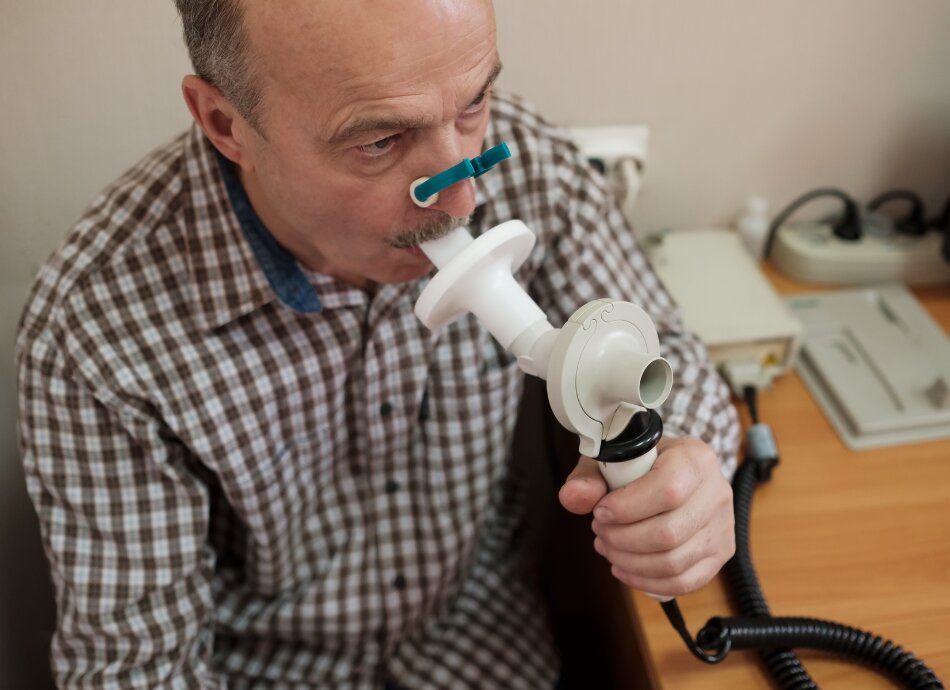Spirometry is used to measure the amount of air you can inhale and exhale and the speed at which you can do so. It's a simple test, it's not painful and usually takes 15 to 30 minutes.
- You will be asked to blow into a tube that's attached to a device called a spirometer.
- A clip may be placed on your nose to make sure that no air escapes from it during the test.
- First, you breathe in fully and then seal your lips around the mouthpiece of the spirometer.
- You then blow out as fast and as far as you can until your lungs are completely empty.
- You will also be asked to breathe in fully and then breathe out slowly as far as you can.
- You will need to repeat this test a few times to ensure the measurements are accurate and consistent.
- You will be given time to recover between tests. You may feel a bit puffed or lightheaded afterwards. If this doesn't pass quickly, let the staff know.
Some people may be given an inhaled medication that relaxes and opens the airways (called a bronchodilator). Spirometry is then repeated after 15 minutes to test for any improvement in lung function.
Video: Performing spirometry in primary care
The video below shows how a spirometry test is done. It may take a few moments to load.
(National Asthma Council, Australia, 2010)






